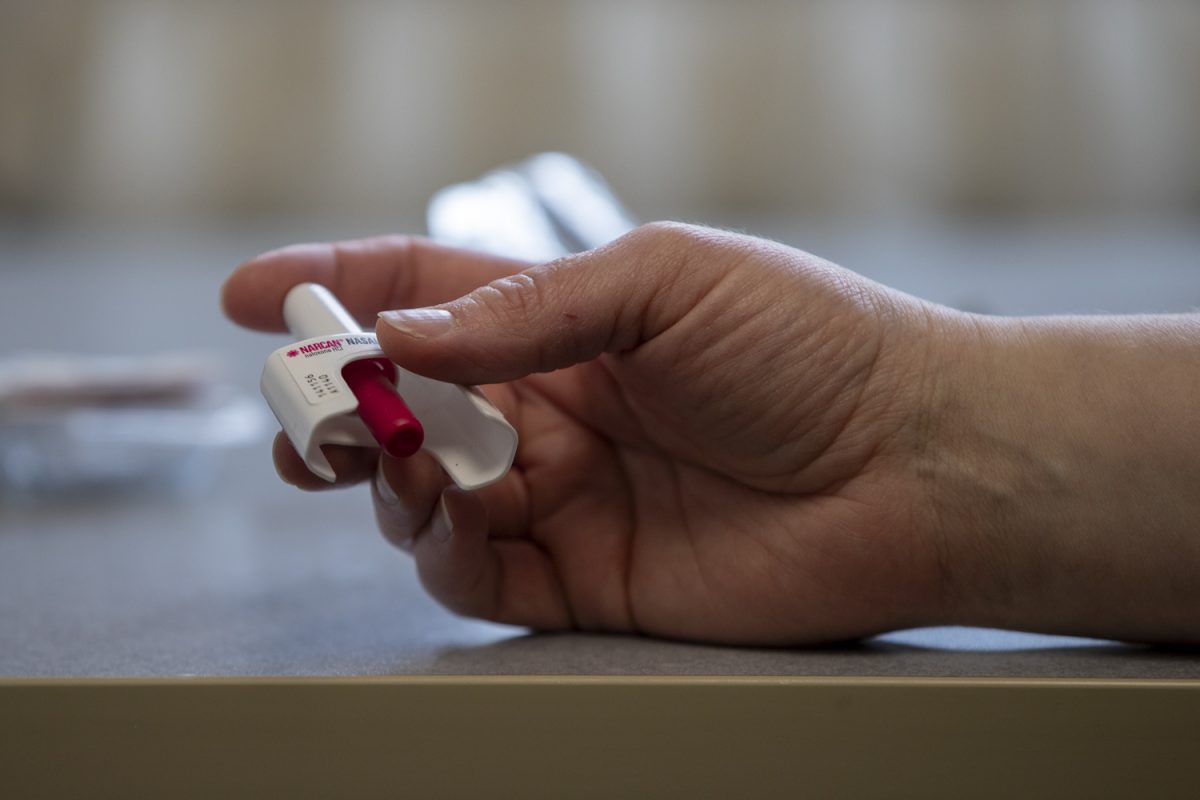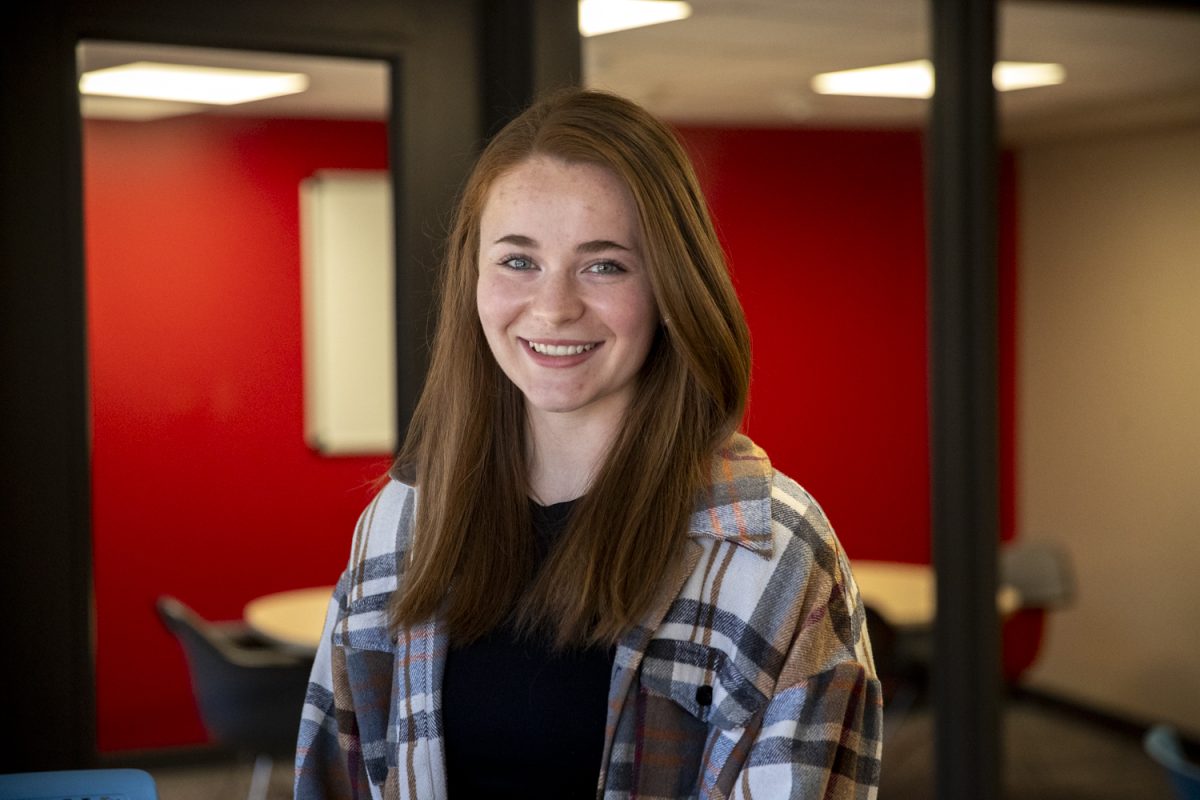A University of Iowa professor and UI Hospitals and Clinics pharmacy specialist are working to increase educational training and access to Narcan after hearing concerns from teachers in Iowa schools.
Ben Miskle, a clinical assistant professor of pharmacy practice and science, and Heidi Wood, a clinical pharmacy specialist and member of the UI Addiction and Recovery Collaborative, aim to get Narcan in Iowa K-12 schools.
Miskle said nurses and other staff members have been trained on how to identify an overdose and how to administer naloxone.
“We are training them to provide them with that information, knowledge, and education but also to destigmatize substance use disorders and understand that this can affect everybody,” Miskle said.
Naloxone has been distributed to the Iowa City Community School District and the Clear Creek Amana School District after Iowa Gov. Kim Reynolds passed a bill in June 2022, allowing naloxone to be administered by schools and school nurses when an opioid overdose occurs on school grounds.
The Iowa Department of Health and Human Services is funding this supply of naloxone in schools, Wood said.
Fatal opioid overdoses continue to plague individuals both in Iowa and across the country.
Naloxone, more commonly known by its primary delivery method, Narcan, is one solution to the problem.
Miskle said naloxone is used when someone has been exposed to a large amount of opioids to the point of overdose. The treatment, which can be administered through the nose or via muscle injection, works to reverse that overdose and comes in a variety of different forms.
“It is as simple as using Flonase — one spray into the nostril — just like any other nasal spray,” he said.
Wood said if someone does not recover within two to three minutes, a second dose can be administered in the second nostril to reverse the overdose.
“At the time, you may not know if someone has overdosed from an opioid or a different drug or substance, but you should administer [naloxone] because even if it is not due to opioids, it does not cause them harm,” Wood said.
Naloxone Iowa, a program through the Iowa Department of Health and Human Services, is providing a free supply not only to school districts but also to nonprofit organizations and businesses.
“This helps the school districts a lot in that they are not having to come up with the money to have these vast supplies,” Wood said.
Naloxone is $45 without certain forms of insurance when purchased over the counter at a pharmacy, Wood said.
Wood said nurses and staff members are not the only ones being trained to administer the medication; school administrators and any other individuals within the school who want to be trained.
“Naloxone is always administered by a bystander, never by the person having the overdose giving it to themselves, and it is so simple,” Wood said.
Wood said naloxone can be placed anywhere within the school, particularly in the AED, making it accessible to the point where even a child could administer the medication.
“Think of it as a fire extinguisher — you really don’t think you are going to use it, but you are not going to not have one,” Wood said.
The goal, Miskle said, is to get naloxone into as many school districts statewide as possible.
“The big thing here is that it is accessible and on hand. The goal is to never have to use it, but it is better to have it and not use it, than not have it at all,” Miskle said.
The stigma of substance use disorders, Miskle said, is very high, and having naloxone implemented in schools is a way to break down that stigma and help educate a large group of people.
Access to rural health care plays a large role in this as well. Miskle said rural access is a barrier and the fastest-growing overdose counties in the state are rural counties like those in Iowa.
According to the Iowa Department of Health and Human Services, there were 258 opioid-related deaths in 2021 and 237 in 2022.
“That is why we are focusing on the entire state because the entire state needs access to equitable health care,” Miskle said.
Wood said sometimes people will say they don’t know of anyone who might be at risk of overdosing, but that they probably do.
“If you were to come across somebody having a medical emergency such as an overdose, you would be able to save a life,” Wood said. “You would be able to make an impact.”
Miskle said to provide care and help to people in need, substance abuse disorders need to be thought of as a real disease much like that of high blood pressure.
“We need to think of it as a very common disease that a lot of people experience,” Miskle said. “You have the potential to save a life with Naloxone, and I think it should be in everybody’s first
aid kit.”







